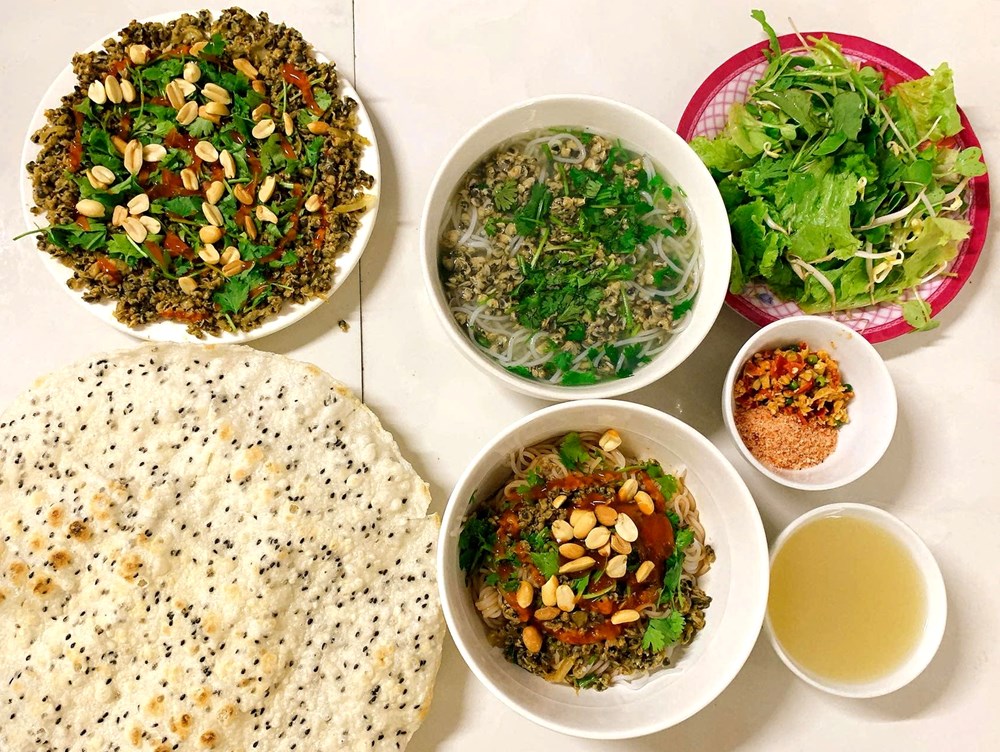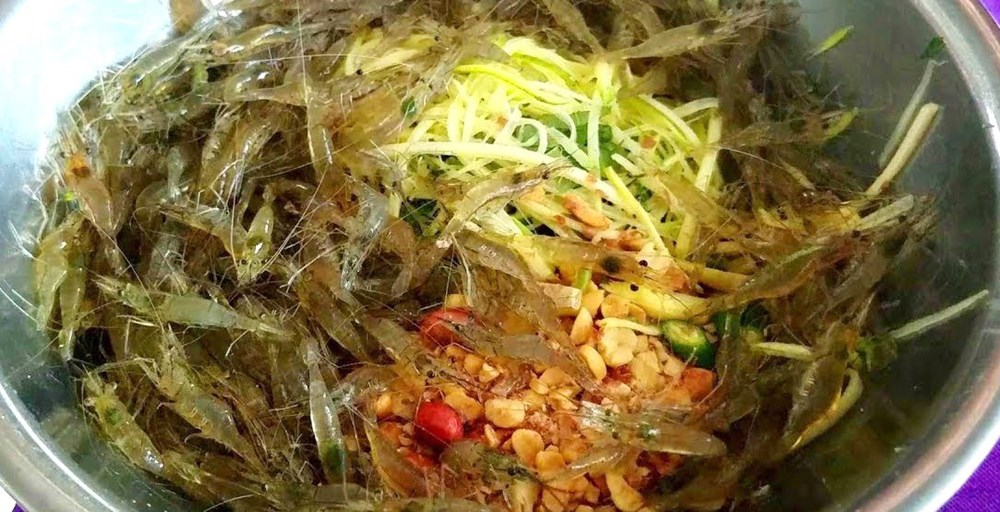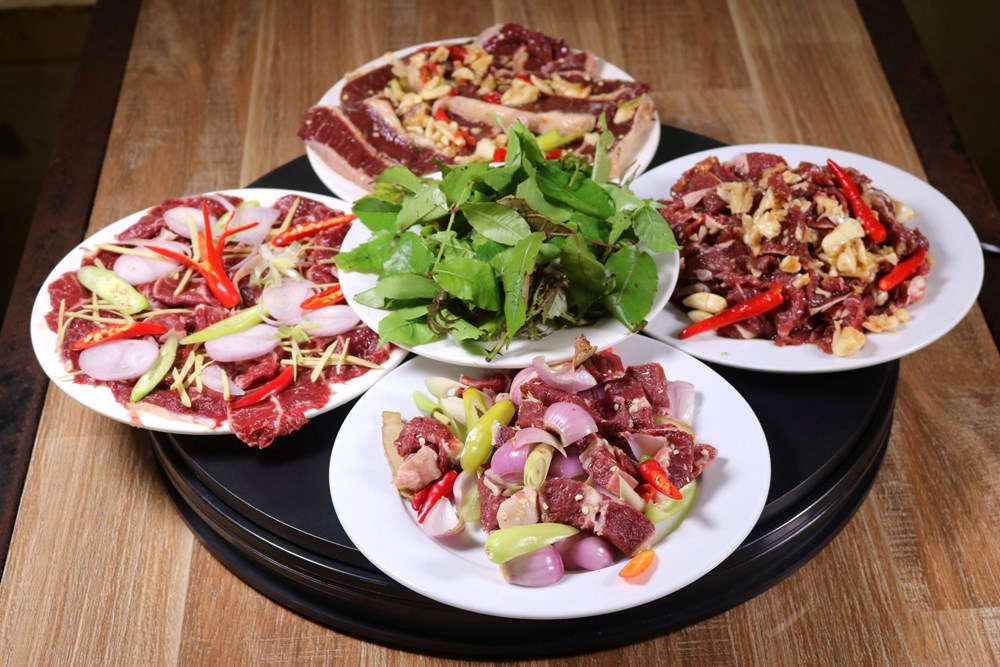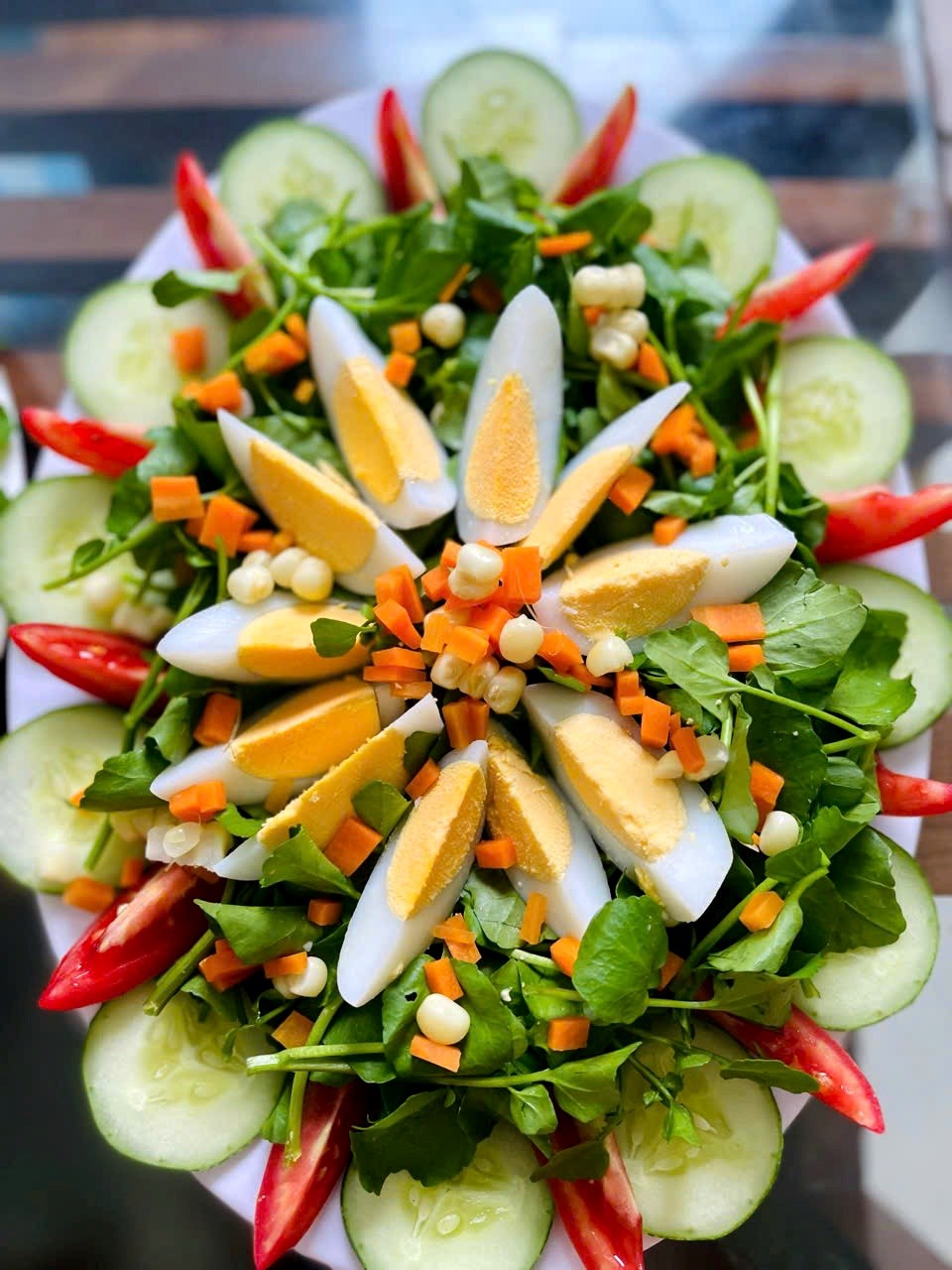Quang Tri, a heroic land and a crossroads between the North and South, not only carries a rich history and unique cultural and historical heritage but also boasts a cuisine deeply rooted in local identity.
The 2023 Cultural and Culinary Festival in Quang Tri
Memorable Dish
The dishes here are not just food; they are cultural symbols, carrying stories about the people and nature. Each dish is connected to the culture of a specific village, land, and is a source of pride for the people of Quang Tri—something not every rural area can boast. From chao ca Vac giuong (snakehead fish porridge), bun hen Mai Xa (Mai Xa baby clam noodle soup), banh uot Phuong Lang (Phuong Lang wet cake), tap nhay Bau Trang (jumping shrimp from Bau Trang), to thit trau la trong (buffalo meat with trong leaves) - each dish is like a piece that completes the culinary puzzle of Quang Tri, enticing many travelers to stay longer and explore its flavors.
Returning from a recent survey of new tourism products in Quang Tri for the upcoming year 2025, Mrs. Pham Hong Thu, from Đuc Minh Investment and Tourism Joint Stock Company (Hanoi), shared: "Quang Tri offers a variety of unique dishes such as chao ca Vac giuong (snakehead fish porridge), bun hen Mai Xa (Mai Xa baby clam noodle soup), tep nhay Bau Trang (jumping shrimp from Bau Trang), banh uot Phương Lang (Phuong Lang wet cake), and thit trau la trong (buffalo meat with trong leaves)... These dishes reflect the soul of Quang Tri's countryside and are also a refined and distinctive feature of the region's culinary culture."
Chao ca Vac giuong is a simple yet flavorful dish, embodying the essence of the countryside and a must-try when visiting Quang Tri. Made from large, fresh, and firm snakehead fish, it is cooked with rice flour, wheat flour, or tapioca starch. The hot bowl of fish porridge is topped with chopped spring onions and ground pepper, offering a rich and savory taste. The natural sweetness of the fish blends harmoniously with the porridge, delighting countless food lovers.

Bun hen Mai Xa
Bun hen Mai Xa, a specialty from Mai Xa village in Gio Linh district, Quang Tri, embodies the essence of river life with its simple yet soulful preparation, reflecting the sincere hearts of the local people. Mai Xa, a riverside village, is renowned for its delicious bun hen (noodle soup with clams). The clams, or chat chat, are carefully prepared to retain their natural sweetness, and are combined with a rich broth, fresh noodles, and crisp herbs. The dish is served with a tangy chili fish sauce and freshly grated ginger, adding a spicy kick to the flavors. In 2020-2021, bun hen Mai Xa was recognized as one of Vietnam's top 100 iconic dishes and specialties.
Banh uot Phương Lang, a specialty of Phuong Lang village in Hai Ba commune, Hai Lang district, Quang Tri, captures the essence of a peaceful countryside. The dish is traditionally made by grinding local rice into a fine powder, which is then steamed to create thin, soft, and aromatic rice cakes. The banh uot is typically served with boiled or grilled pork, fresh herbs, and a flavorful chili fish sauce. The chewy texture of the rice cakes, combined with the savory taste of the pork and the tangy fish sauce, creates a delightful and irresistible dish. This simple yet delicious combination reflects the charm of Quang Tri's rural food culture.

Tep nhay Bau Trang
Tep nhay Bau Trạng is a unique dish that embodies the connection between the people of Quang Tri and nature. This dish is made from small, lively shrimp freshly caught from Bàu Trạng, a small stream in the Bau Thuy U area, famous for its abundant shrimp. The shrimp are so fresh they still "jump," and are soaked in saltwater for about 10 minutes before being mixed with aromatic herbs, coriander, green mango, green pepper, chili, garlic, seasonings, and lime juice. The fresh, sweet taste of the shrimp combined with the delightful experience of eating them while they "dance" makes this dish an unforgettable experience for visitors. It was recognized by the Vietnam Records Organization in the top 100 special dishes and top 100 notable gifts from 63 provinces and cities of Vietnam in 2021-2022.
A distinctive specialty of the mountainous region in Quang Tri is thit trau la trong (buffalo meat with trong leaves), a dish deeply rooted in the culinary traditions of the people in Central Vietnam. Trong leaves, a type of wild leaf with a unique spicy and fragrant aroma, are used to grill buffalo meat, creating a distinct flavor. The buffalo meat is tender and sweet, grilled over glowing charcoal, with the subtle fragrance of trơng leaves adding a memorable taste that leaves a lasting impression on diners.
Other notable dishes from Quảng Trị include banh loc My Chanh (My Chanh tapioca dumplings), rau liet Gio An (Gio An wild vegetables), nem lui cho Sai (Sai market grilled pork skewers), and hau Con Co (Con Co oysters), all of which contribute to a well-rounded culinary experience when visiting this land. Quang Tri's cuisine serves as an emotional bridge between the region and its visitors. These dishes are not only delicious but also tell the stories of history, culture, and the people of Quang Tri. They embody the hard work, creativity, and love for the homeland, allowing visitors to not only savor the rich flavors but also immerse themselves in the life of the local people.

Thit trau la trong
Pathway to elevating Quang Tri's Culinary Culture
However, to truly make cuisine a key factor in attracting and retaining tourists, Quang Tri needs a well-planned and sustainable promotional strategy. Mr. Nguyen Ha Hai, Vice President of the Vietnam Young Businessmen Tourism Club, suggested: “Quang Tri should organize culinary festivals to promote and create opportunities for interaction between tourists and locals. Developing a brand for specialties, registering trademarks for signature dishes, and preserving traditional cooking methods are essential. Additionally, training tourism and culinary staff to enhance skills for chefs and service personnel will improve the overall experience. Integrating cuisine into travel tours is also important. Combining sightseeing with dining experiences will leave a lasting impression on visitors.”
Quang Tri's cuisine is more than just food; it is a cultural narrative that connects people, linking the past with the present. This unique aspect has and will continue to captivate tourists every time they visit this land. With the right development strategy, Quang Tri's cuisine will not only promote the image of its homeland but also become a key highlight on Vietnam's tourism map.

Rau liet Gio An
With a rich and distinctive culinary culture, Quang Tri holds a significant advantage in attracting and retaining tourists. However, to truly leverage food as a driving force for tourism development, the region needs a well-structured strategy, utilizing its potential in a scientific and sustainable manner. To make cuisine a key competitive element in the tourism industry, it is essential to position and build the Quang Tri culinary brand on the national and international tourism map.
Tourism experts suggest researching and registering trademarks for local specialties and iconic dishes such as: Chao ca Vac giuong, banh uot Phuong Lang, bun hen Mai Xa, and banh loc My Chanh. These dishes should be protected in terms of name, origin, and traditional recipes. This not only helps maintain the quality of the dishes but also enhances their commercial value and brand recognition.
Creating stories tied to the cuisine allows each dish to have its own history and narrative. For example, tep nhay Bau Trang could be introduced as a gift from a natural freshwater lake and the birthplace of the legendary Trang Vinh Hoang, while bun hen Mai Xa represents the harmonious blend between the people and the water-rich nature. These stories not only make the dishes more appealing but also help visitors remember them for a long time.
In addition, developing infrastructure and culinary tourism services in a coordinated manner is essential. This includes utilizing traditional culinary spaces, such as creating traditional food villages that recreate historical living environments, where visitors can enjoy local dishes while also learning about the local culture.
Supporting local culinary businesses by providing training courses in management, cooking skills, and customer service is essential to improving the quality of service at local restaurants and eateries. Integrating culinary experiences into tourist attractions by creating food zones near historical sites such as the Quang Tri Citadel, Vinh Moc Tunnels, or natural tourist destinations like Dakrong and Cua Tung would elevate the experience. Food is not just a dish, but an integral part of exploring the local culture. Therefore, it is important to establish more culinary tours that offer these unique experiences.
Moreover, enhancing communication and promoting Quang Tri's culinary offerings can help elevate its image in the eyes of tourists. Using digital platforms, including social media, websites, and television channels, to showcase these dishes through engaging videos and images will attract attention. Collaborating with influencers, chefs, and bloggers in travel and food can further boost visibility. Publishing books and materials about local cuisine, as well as creating guides or photo albums that tell the stories behind these dishes, would help spread awareness. Participating in international culinary events and associating these distinctive dishes with Vietnam's tourism image would also strengthen the brand recognition.




